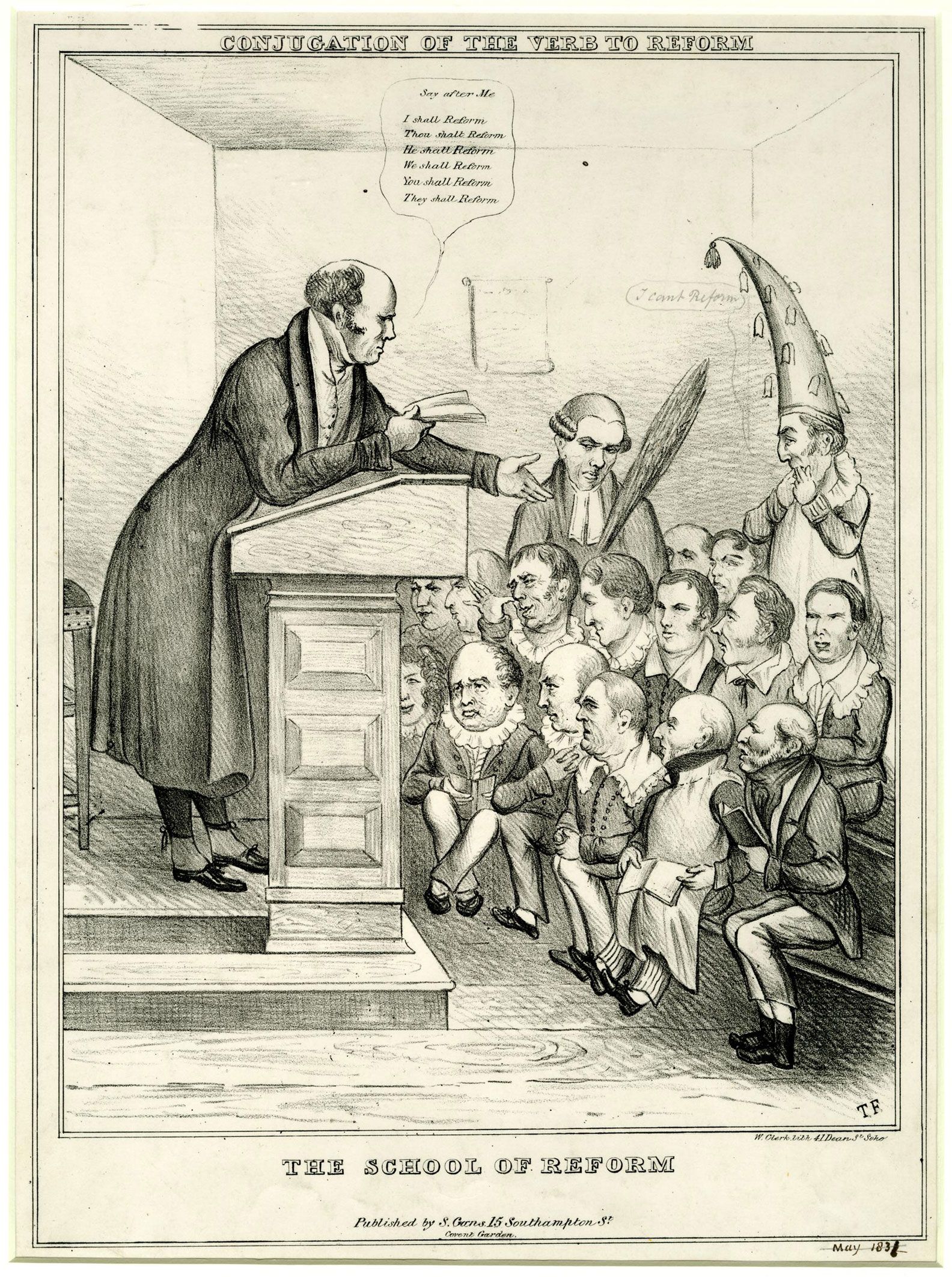Welcome to my blog, 19th Century! In this article, we will delve into the intriguing topic of wages in the United Kingdom during the 19th century. Join me as we explore the socio-economic landscape and discover the fascinating trends and challenges faced by workers during this transformative era.
Wages in the United Kingdom during the 19th Century: A Historical Analysis
During the 19th century, wages in the United Kingdom experienced significant changes as a result of industrialization and economic transformation. The Industrial Revolution brought about a shift from an agrarian economy to a factory-based one, leading to new opportunities for employment. As factories emerged and the demand for labor increased, wages for certain industries began to rise.
However, this period also witnessed income disparities between different sectors and regions. While workers in the growing industries such as coal mining, ironmaking, and textiles enjoyed higher wages, agricultural workers and those in traditional crafts often experienced low pay and poor working conditions.
The formation of trade unions and the implementation of labor legislation played a crucial role in shaping wage dynamics during this era. Workers began to organize themselves and bargain collectively for better wages and improved working conditions. The Combination Acts of the early 19th century restricted the formation of trade unions, but they were later repealed, allowing for the growth of organized labor movements.
The fluctuating economic conditions throughout the 19th century also influenced wages. Periods of economic growth led to higher wages, while recessions and depressions resulted in wage reductions and increased unemployment. The impact of globalization, colonization, and conflicts also affected wage levels, as demands for goods and services fluctuated.
In addition, gender played a significant role in determining wages. Women generally earned lower wages compared to men, irrespective of their occupation. This disparity was influenced by societal norms and prejudices, which limited women’s access to higher-paying jobs and opportunities for advancement.
Overall, wage dynamics during the 19th century in the United Kingdom were complex and influenced by various factors including industrialization, regional differences, labor movements, economic fluctuations, and gender inequalities. This period laid the foundation for future labor reforms and set the stage for discussions on fair wages and workers’ rights that would continue into the 20th century.
Why the UK is Doomed After Brexit
Could You Survive as a Victorian Factory Worker?
What were the salaries in the 19th century?
In the 19th century, salaries varied greatly depending on occupation, location, and other factors. However, it is important to note that wages then were significantly lower compared to modern standards.
In the early 1800s, the average annual income for a skilled laborer ranged from $200 to $300, while unskilled workers earned even less. Factory workers, for example, could earn around $1 per day, which amounted to approximately $300 per year.
For white-collar professions, such as teachers, clerks, and bookkeepers, salaries were slightly higher. Teachers typically earned around $300 to $400 a year, while office workers earned between $600 and $1,000 annually.
Professions that required higher skills or education commanded higher salaries. Doctors and lawyers, for instance, had higher incomes compared to other occupations. Doctors could earn anywhere from $500 to $2,000 a year, depending on their specialization and reputation. Lawyers’ salaries varied greatly but were generally higher, ranging from $1,000 to several thousand dollars annually.
It is worth mentioning that these figures represent average incomes and there were significant disparities based on geographic location and socio-economic status. Furthermore, these salaries did not account for inflation, so the purchasing power of those wages was considerably different from today.
Overall, while some individuals could earn decent incomes, the majority of people in the 19th century lived in modest circumstances, struggling to make ends meet.
What was the amount of wages received by workers in 19th century England?
In the 19th century, wages received by workers in England varied greatly depending on their occupation and geographical location.
Industrial workers, particularly those in factories and mines, typically earned low wages that barely provided for their basic needs. They often worked long hours, including women and children, and faced harsh working conditions.
In contrast, skilled workers such as artisans, craftsmen, and skilled laborers enjoyed higher wages due to their expertise and the demand for their specialized skills. These individuals could earn a decent income and have a better standard of living compared to unskilled laborers.
Additionally, wages were influenced by factors such as inflation, economic fluctuations, and the presence of labor unions. In certain industries, unions fought for higher wages and better working conditions, leading to some improvements for workers.
It is important to note that there were significant disparities in wages between different regions of England. Industrial areas, such as the manufacturing hubs in the North, generally offered higher wages compared to agricultural regions in the South.
Overall, it is difficult to pinpoint an exact average wage for workers in 19th century England due to the diverse nature of occupations and regional differences. However, it is clear that many workers struggled to make a decent living and faced economic challenges during this time period.
What were the wages like during the 1800s?
During the 19th century, wages varied greatly depending on occupation, location, and gender. Industrialization and urbanization led to significant changes in the labor market and wage structure. Factory workers and skilled artisans in urban areas generally earned higher wages compared to agricultural workers in rural areas.
In the early part of the century, industrial workers faced long hours, poor working conditions, and low pay. However, as labor movements gained momentum, workers began to advocate for higher wages and better working conditions. The implementation of labor laws and the growth of trade unions gradually improved wages and working conditions for many.
Gender also played a significant role in wage disparity during this period. Women typically earned significantly less than men for doing the same job. They were often confined to low-paying occupations such as domestic service or textile work. Women’s wages were considered supplementary to male incomes and were often seen as secondary to their male counterparts.
Additionally, the wages of enslaved individuals were particularly low or nonexistent, as they were considered property rather than employees. The abolition of slavery in the United States in the mid-19th century had a profound impact on labor dynamics and wage structures.
Overall, while wages increased over the course of the 19th century due to labor movements, industrialization, and economic growth, wage inequality persisted, particularly based on occupation and gender. It was not until the late 19th and early 20th centuries that significant progress was made in narrowing these disparities.
What were the wages in 1890?
In 1890, wages varied depending on the occupation and region. In general, industrial workers earned significantly lower wages compared to skilled workers or professionals. For example, a factory worker might earn around $8 to $12 per week, while a skilled tradesman like a carpenter or blacksmith could earn between $20 to $25 per week.
In agriculture, farm workers typically earned lower wages, with some making as little as $5 to $8 per week. Domestic servants, such as maids or cooks, also received relatively low wages, often earning around $3 to $5 per week.
It’s important to note that these wages were just rough estimates and could vary based on factors such as location, gender, and experience. Additionally, living costs and purchasing power were significantly different during this time period compared to today, so it’s challenging to make a direct comparison.
Overall, wages during the 19th century were generally lower than what we see today, and the gap between different occupations and social classes was significant.
Frequently Asked Questions
How did wages in the United Kingdom change during the 19th century?
During the 19th century in the United Kingdom, wages experienced significant changes. At the beginning of the century, wages were generally low, particularly for workers in agriculture and manufacturing industries. However, as the century progressed, wages gradually started to rise.
The Industrial Revolution played a crucial role in shaping wage patterns during this period. As new technologies and machinery were introduced, the demand for skilled workers increased. This led to higher wages for those who possessed specialized skills or worked in sectors that required technical expertise.
Additionally, urbanization and population growth resulted in a greater demand for labor in cities. This, in turn, exerted upward pressure on wages due to the competition for workers. Many people migrated from rural areas to cities in search of better job opportunities and higher wages.
However, it is important to note that wage improvements were not uniform across all sectors and regions. Gender and class also played significant roles in determining wages. Women, in particular, were often paid significantly less than men for performing the same work. Similarly, workers from lower social classes tended to receive lower wages compared to those from wealthier backgrounds.
Moreover, economic fluctuations, such as recessions and periods of economic boom, influenced wage trends throughout the 19th century. During times of economic downturn, wages could decrease as businesses faced financial difficulties. Conversely, during periods of economic prosperity, wages could rise due to increased demand for labor.
Overall, while wages in the United Kingdom experienced some positive changes during the 19th century, there were still significant disparities based on occupation, gender, and social class. Industrialization, urbanization, and economic fluctuations all played a crucial role in shaping wage patterns during this transformative period.
What were the average wages for different occupations in the 19th century United Kingdom?
During the 19th century, wages varied significantly based on occupation in the United Kingdom. Here is a glimpse of average wages for some common occupations:
1. Agricultural laborers: In the early 19th century, agricultural laborers typically earned around 9 to 12 shillings per week. However, due to various economic and social factors, their wages often fluctuated.
2. Factory workers: Factory workers, particularly in textile mills, earned relatively low wages. In the mid-19th century, a male textile worker might earn around 10 shillings per week, while female workers earned less, often around 6 to 8 shillings.
3. Skilled craftsmen: Skilled craftsmen, such as carpenters, blacksmiths, and shoemakers, generally earned higher wages than unskilled workers. Depending on their expertise, these craftsmen could earn around 20 to 30 shillings per week.
4. Domestic servants: Domestic servants, including maids and butlers, were paid significantly less than skilled workers. Their wages ranged from about 5 to 15 shillings per week, depending on their experience and responsibilities.
5. Coal miners: Coal miners endured challenging and dangerous working conditions. Their wages varied by region and mine productivity but averaged around 15 to 25 shillings per week during the 19th century.
It’s important to note that these figures represent average wages and can vary based on geographic location, economic conditions, and individual circumstances.
What factors influenced wage levels and fluctuations in the 19th century United Kingdom?
Several factors influenced wage levels and fluctuations in the 19th century United Kingdom.
1. Industrialization: The industrial revolution led to a significant increase in demand for labor in factories and mines. This increased demand for laborers put upward pressure on wages in these sectors.
2. Technological advancements: Innovations such as steam power and machinery improved productivity and efficiency in industries. As a result, workers with specialized technical skills were in high demand, leading to higher wages for these skilled workers.
3. Population growth: The growing population created a larger labor supply, which contributed to lower wages due to increased competition for jobs. High population levels also put downward pressure on wages in agriculture as more people sought employment in the sector.
4. Trade unions and collective bargaining: The rise of trade unions in the 19th century allowed workers to negotiate for better pay and working conditions. Strikes and collective bargaining played a crucial role in raising wages for many workers across different industries.
5. Economic cycles: Fluctuations in the overall economy, such as recessions and booms, affected wages. During periods of economic growth, wages tended to rise, while downturns could lead to wage stagnation or even reductions.
6. Government policies and legislation: Government regulations, such as minimum wage laws and factory acts, aimed to protect workers’ rights and improve their working conditions. These policies had an impact on wage levels and fluctuations.
These various factors interacted with one another and influenced wage levels and fluctuations throughout the 19th century in the United Kingdom.
The wages in the United Kingdom during the 19th century were a complex and contentious issue. The Industrial Revolution brought about significant changes in the economy, leading to both increased productivity and widespread poverty among workers. Despite the growth of industries and the accumulation of wealth by employers, wages for workers remained low and often stagnated, perpetuating a cycle of economic inequality.
The introduction of factory systems and mass production had a profound impact on labor conditions, with long working hours, dangerous workplaces, and minimal social protections. The lack of government intervention and regulation contributed to the exploitation of workers, who had little bargaining power and were at the mercy of their employers.
The advent of trade unions and the rise of social movements in the late 19th century marked a turning point in the fight for fairer wages and better working conditions. Workers began to organize and advocate for their rights, demanding higher wages, shorter working hours, and improved safety measures. While these movements faced significant opposition from employers and the government, they laid the groundwork for future labor reforms.
It is important to recognize the struggles and sacrifices of the workers who paved the way for improved wages and labor conditions today. Their fight for justice and fair treatment serves as a reminder of the importance of workers’ rights, even in the modern era. Understanding the historical context surrounding wages in the 19th century allows us to appreciate the progress that has been made, while also highlighting the ongoing challenges in achieving economic equality.






